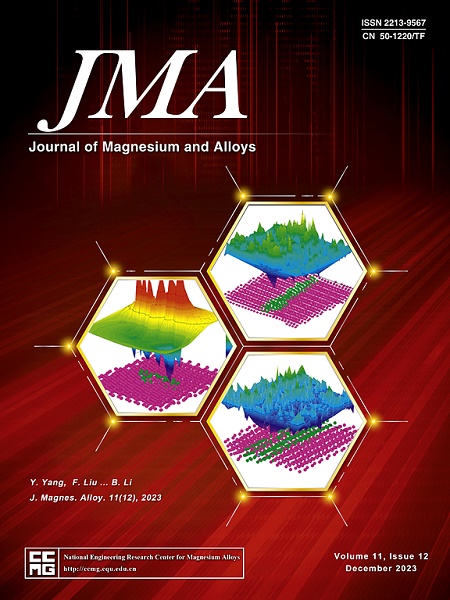Study on the theoretical and mechanism of CaF₂-catalyzed vacuum carbothermal reduction of MgO
IF 15.8
1区 材料科学
Q1 METALLURGY & METALLURGICAL ENGINEERING
引用次数: 0
Abstract
The increasing demand for magnesium as a next-generation structural material highlights the significance of incorporating CaF₂ as a catalyst to enhance the efficiency of vacuum carbothermal reduction of magnesium (VCTRM). This study investigates the thermodynamic theory and catalytic mechanism of CaF₂ in the VCTRM process. Catalytic reduction experiments and molecular dynamics simulations were conducted to gain a comprehensive understanding of the process. Thermodynamic calculations indicate that in vacuum carbothermal reduction, the primary reaction occurs between MgO and C. Analysis shows that CaF₂'s catalytic action primarily involves F⁻, Ca²⁺, and melt eutectic. Our experiments demonstrate that the addition of CaF₂ significantly increases the reduction rate. Furthermore, the mass loss rate increases with both the quantity of CaF₂ added and the holding time, stabilizing at additions over 5%. Experiments conducted at temperatures above the melting point of CaF₂ exhibited a pronounced catalytic effect. The resultant magnesium showed optimal structure and crystallization, with a purity of 87.84%. Notably, while CaF₂ remained in the residue, it was not detected in the condensate, confirming its catalytic role. Molecular dynamics simulations revealed that molten CaF₂ sabotages the structure of magnesium oxide, with F⁻ dispersing onto the surface of MgO, thus enhancing the reaction between MgO and C to form CO. However, no chemical reaction was observed between C, MgO, and CaF₂. The occurrence of the carbothermal reduction reaction at high temperatures depends on the concentration of the reducing agent C, with CaF₂ influencing the reaction rate. This research elucidates the theoretical and mechanistic foundations of CaF₂-catalyzed VCTRM, aligning with the green energy-saving concept and significantly advancing the green and efficient VCTRM process.

CaF₂ 催化真空碳热还原氧化镁的理论和机理研究
本文章由计算机程序翻译,如有差异,请以英文原文为准。
求助全文
约1分钟内获得全文
求助全文
来源期刊

Journal of Magnesium and Alloys
Engineering-Mechanics of Materials
CiteScore
20.20
自引率
14.80%
发文量
52
审稿时长
59 days
期刊介绍:
The Journal of Magnesium and Alloys serves as a global platform for both theoretical and experimental studies in magnesium science and engineering. It welcomes submissions investigating various scientific and engineering factors impacting the metallurgy, processing, microstructure, properties, and applications of magnesium and alloys. The journal covers all aspects of magnesium and alloy research, including raw materials, alloy casting, extrusion and deformation, corrosion and surface treatment, joining and machining, simulation and modeling, microstructure evolution and mechanical properties, new alloy development, magnesium-based composites, bio-materials and energy materials, applications, and recycling.
 求助内容:
求助内容: 应助结果提醒方式:
应助结果提醒方式:


